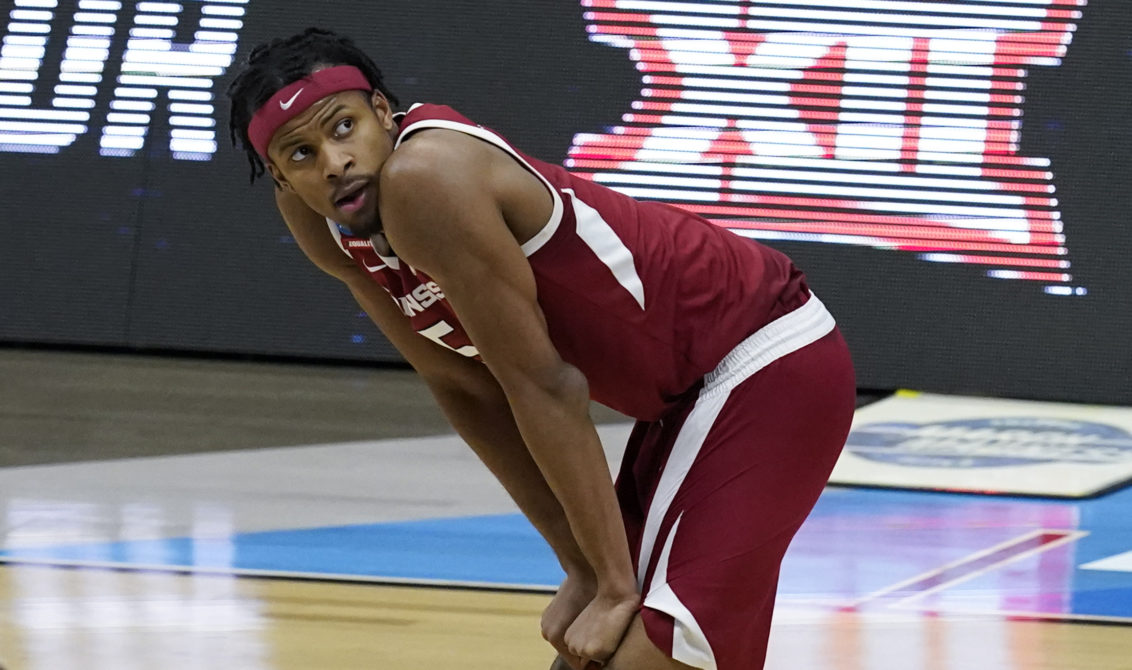July 16, 2021
Photo: Darron Cummings / AP
The 2021 NBA Draft (July 29) is steadily approaching. The Charlotte Hornets will be making their fifth lottery pick in as many years when they’re on the clock at No. 11, and this time around the organization will look to capitalize on the momentum of their current youth movement. In years past the Hornets’ drafting ability was heavily criticized by the NBA community as a whole, but it’s become a lauded characteristic of Mitch Kupchak and his front office staff since they took over.
Of the four previous lottery picks, only Malik Monk is a Rich Cho-era holdover, with the rest of the prospects being scouted by Kupchak and company; LaMelo Ball, Miles Bridges and PJ Washington only scratch the surface of Charlotte’s newfound draft success. Devonte’ Graham has wildly outplayed expectations as the 34th pick in the 2018 draft and looks to be headed for a payday as a restricted free agent this offseason. Cody Martin and Jalen McDaniels, the 36th and 52nd picks in the 2019 draft, respectively, have proved themselves as rotation-level players in the NBA with McDaniels looking like he could possibly be one of the steals of the class.
View this post on Instagram
Even though the Hornets have excelled at drafting in recent years, that doesn’t guarantee they make the 11th pick; as they transition from a rebuilding team to playoff contender, it could make more sense to trade up or down to acquire another player. With 2021 being a fairly deep draft class, a trade down to pick up an extra asset or two is a lot more likely than Kupchak paying a premium to jump up a few spots. Keep an eye on the Oklahoma City Thunder (who own picks 16 and 18) and the New York Knicks, who are slated to pick 19th and 21st, as potential trade partners.
The list of options with the 11th pick is not short. The Hornets’ two clear-cut positions of need– center and wing– are both readily available in the mid-lottery, and whether it’s via trade or at No. 11, they will have their fair share of players to choose from. After the consensus top six are off the board (Barnes, Cunningham, Green, Kuminga, Mobley and Suggs), only five other prospects will be taken before the Hornets are up, and mathematically speaking it’s not possible for all of the prospects they’re high on to be swept out from under them.
The pool of prospects the Hornets could select with their lottery pick this season is quite large, and Kupchak has proven that he’ll draft the best player available. The Hornets drafted Bridges and Washington in back-to-back years and took Ball on the heels of breakout seasons from Graham and Terry Rozier. So there’s a lot to think about and the Hornets are in the sweet spot of the first round where many could be attainable. Let’s take a look at a few prospects, shall we?
James Bouknight
Bouknight is one of the draft board risers among this group as he’s slowly climbed from being in the teens on most mock drafts to top ten. An explosive three-level scoring threat, he was an All-Big East first-team selection despite playing in only 15 games due to an elbow injury. The biggest question surrounding Bouknight is his 3-point shooting efficiency; he only hit 29.3 percent of his five 3-point attempts per game at UConn, but he displayed touch and shotmaking ability from all parts of the floor which showcases his potential as a shooter at the NBA level.
Keon Johnson
In case there were any remaining questions about Keon Johnson’s athleticism, they were dispelled when he set the NBA Draft combine record with a 48-inch vertical leap. As is the case with many prospects in the 2021 class, Johnson’s long-range shooting is a question mark, but he should be able to provide transition offense and off-ball movement as a rookie while defense serves as his calling card. Johnson is a hard-nosed defender at 6-foot-5 with a 6-foot-7 wingspan. He has a high motor and elite athletic ability as one of the highest upside players in the draft if he can build on his flashes of playmaking.
Kai Jones
Whichever team drafts Jones will be taking a risk, but if he pans out it will be 100 percent worth it. As tantalizing as his skillset and athletic package are, a lack of polish as a result of not playing organized basketball until he was 15 years old might have his floor being out of the NBA in a handful of seasons. Regardless, 7-footers rarely flash the levels of ball-handling, hand-eye coordination, footwork, shooting, and rim protection that Jones possesses. The development project will be worth undertaking for a team between picks 10 and 20.
Moses Moody
Out of all the prospects in this group, Moody seems to be linked to the Hornets more than anyone. A prototypical NBA wing in terms of frame, Moody’s freakish 7-foot-1 wingspan and physical tools afford him versatility as a defender and give optimism that he can improve as an attacker and finisher off-the-dribble as he develops in the league. On top of that, he’s got a long track record as a sharpshooter; Moody nailed 35.8 percent of his 3-pointers at Arkansas and 46.9 percent as a senior at Montverde Academy alongside Cade Cunningham.
Alperen Şengün
Along with Moody, Şengün is a prospect that’s been linked heavily to the Hornets throughout the pre-draft process. The entire world knows Charlotte needs a center, and Şengün is perhaps the most NBA-ready big in the class not named Evan Mobley. He won MVP of the Turkish Super League with Beşiktaş as an 18-year-old by averaging 19.2 points, 9.4 rebounds, 2.5 assists, 1.7 blocks and 1.3 steals per game— a truly unprecedented feat, and players that are successful at his age in Europe rarely fail in the NBA. Şengün can score inside, make dazzling passes and rebound, but will he ever be able to defend or space the floor at a requisite NBA level?
Franz Wagner
Wagner is the definition of a “solid” player– not to undersell his talent, but he’s got a smooth all-around game and while he doesn’t often pop on film. He doesn’t have many weaknesses, and that’s not usually the case for 19-year-old NBA prospects. He improved his long-range shooting efficiency as a sophomore at Michigan and his free throw percentage indicates further improvement as he ages. He’s not a great shot creator, but raising his 3-point percentage will force defenses to respect him on spot-up opportunities and allow him to utilize that fluid athleticism and high basketball IQ while attacking closeouts.
Ziaire Williams
Williams was a consensus top ten recruit coming out of high school, but his lone season at Stanford was marred by pandemic restrictions, injury, and personal loss within his family. Unfortunately, his stats reflected that. Williams is a 6-foot-10 versatile shot-maker with playmaking feel and potential as an oversized perimeter defender. He shot 29.1 percent from distance and averaged 2.9 turnovers to 2.2 assists per game, but for many scouts he passes the “eye test” with highlights and flashes that are among the best in the class.
Read next:

 By
By 
